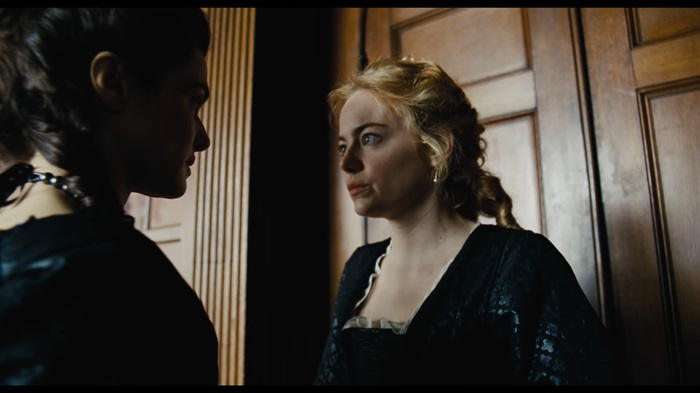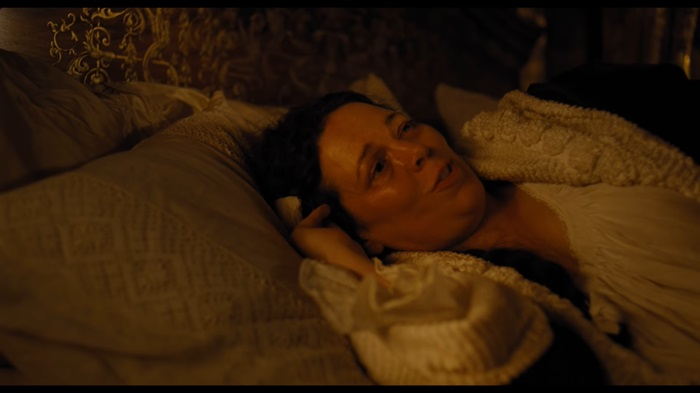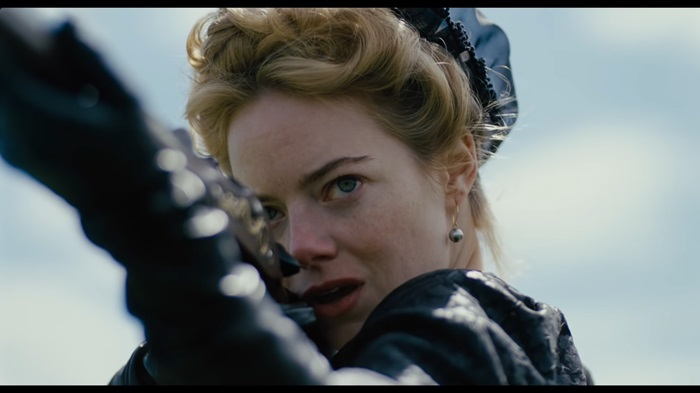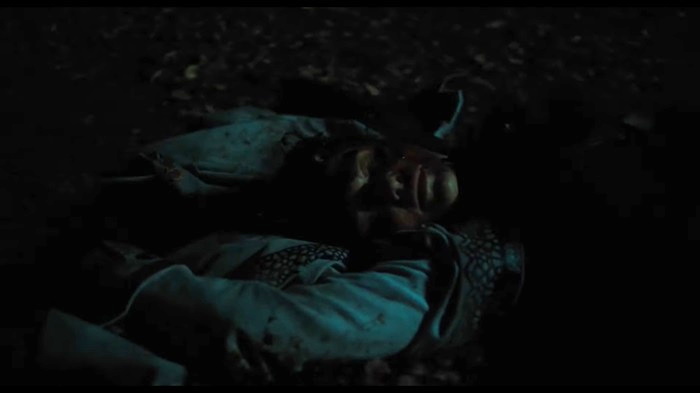The ending of The Favourite is a multi-layered and evocative conclusion to a film that delves into the intricacies of power, desire, and manipulation in the royal court. It provides resolution to the central conflict between Lady Sarah and Abigail while leaving Queen Anne in a state of emotional turmoil and loneliness. The film's symbolism and ambiguity in the closing scenes leave the audience with much to ponder about the nature of ambition, loyalty, and the human condition.
Plot Summary
Set in early 18th-century England, The Favourite centers on the tumultuous and intricate relationships within the court of Queen Anne. The story primarily revolves around three central characters: Queen Anne (Olivia Colman), her close confidante Lady Sarah Marlborough (Rachel Weisz), and Abigail Masham (Emma Stone), a fallen aristocrat who joins the court as a servant. Lady Sarah exerts considerable power and influence as the queen's trusted advisor, essentially governing on her behalf. However, when Abigail arrives at court and gradually manipulates her way into Queen Anne's affections, a fierce rivalry between Abigail and Lady Sarah ensues.
This power struggle unfolds amidst the backdrop of England's war with France and the larger political context of the time. The film skillfully weaves elements of romance, humour, and political intrigue, making it a unique and darkly comedic period drama. As the plot unfolds, the three women's relationships become increasingly complicated, and the film explores themes of ambition, manipulation, and the cost of power. The movie's title, The Favourite, refers to the shifting allegiances and the pursuit of favour within the royal court, with each character vying for the coveted title of being the queen's favourite.
The Ending Explained
The ending of The Favourite is a culmination of the intricate web of relationships, power dynamics, and political maneuvering that has unfolded throughout the film. The final scenes provide resolution and insight into the fate of the central characters, as well as the broader themes of manipulation, ambition, and the complexities of human connection that permeate the narrative.
The film's conclusion is marked by a series of significant events and revelations:

The Power Struggle: Throughout the film, Lady Sarah and Abigail vie for the queen's favour and position as her "favourite." Their struggle for dominance in the court serves as the central conflict of the narrative. The queen, caught in the middle, is both a pawn and a decision-maker in this power struggle.

Queen Anne's Health: Queen Anne's physical and emotional state deteriorates as the story unfolds. She is frequently seen in pain, relying on a wheelchair for mobility and using opium to alleviate her suffering. Her fragile state is a significant factor in the power dynamics of the court.
The Love Triangle: The film subtly suggests that there is a romantic and sexual tension between Lady Sarah, Abigail, and Queen Anne. While Lady Sarah is the queen's confidante, Abigail seduces her way into the queen's bed and trust. The tension in the love triangle adds complexity to their interactions.
Political Intrigues: The backdrop of the story includes the political and military context of the time, with England at war with France. The characters' personal ambitions and rivalries are intertwined with larger political maneuvers, which influence their actions and decisions.
The climax and conclusion of the film can be summarized in a few key events:

Abigail's Ascendancy: Abigail successfully manipulates Queen Anne into granting her a promotion, allowing her to rise from servant to Lady of the Bedchamber. Her actions include betraying Lady Sarah by revealing her correspondence with the opposition, which threatens the queen's authority.

Sarah's Exile: Queen Anne, feeling betrayed by Lady Sarah, banishes her from the court and insists that she leave immediately. This is a significant turning point in the power struggle, as it leaves Abigail as the queen's sole confidante.
The Duck Races: The film introduces a subplot involving duck races, which serve as a metaphor for the competition and power struggle between Abigail and Lady Sarah. The queen, in her declining health, takes particular interest in the races, and the outcome of the final race has symbolic significance.
Queen Anne's Loss and Decision: Queen Anne's health takes a drastic turn for the worse, and she becomes increasingly isolated. She is deeply affected by the deaths of her beloved rabbits and her sense of loneliness. In a pivotal moment, she decides to bestow her affections and authority upon Abigail, effectively making her the new "favourite."
The ending of The Favourite is marked by several crucial developments:
Abigail's Triumph: Abigail has successfully maneuvered herself into the role of Queen Anne's favourite, effectively assuming the position previously held by Lady Sarah. She is now in a position of considerable influence over the queen and the court.
Lady Sarah's Departure: Lady Sarah, having been exiled from the court, leaves in a carriage. Her departure marks the end of her time as the queen's confidante and signals a shift in the power dynamics within the court.
The Rabbit Symbolism: The film's final moments are marked by a surreal and symbolic sequence. Queen Anne, alone in her room, discovers a white rabbit—symbolizing the child she lost and the emotional turmoil she has endured. This moment is both poignant and enigmatic, highlighting the queen's inner pain and loneliness.
The Duck Race Resolution: The final duck race takes place in a muddy and chaotic environment. It concludes with the queen's favourite duck, Duck 9, winning, which has both literal and metaphorical significance. The chaotic and competitive nature of the duck race mirrors the intrigue and unpredictability of the court's power dynamics.
Ambiguity and Isolation: The film ends with Queen Anne sitting in her chambers, alone with her white rabbit. The ambiguity of this scene speaks to the isolation and emotional turmoil she continues to experience. Despite her newfound ‘favourite’ in Abigail, Queen Anne remains profoundly lonely and damaged by her past.
The ending of The Favourite is a reflection of the complex and tumultuous relationships at the heart of the story. It leaves the audience with a sense of uncertainty and melancholy, as it becomes apparent that while Abigail has achieved her goal of becoming the queen's favourite, it has not brought the happiness and fulfillment she may have anticipated.
The film's conclusion also underscores the themes of manipulation and ambition that run throughout the narrative. Abigail's success in maneuvering her way into Queen Anne's favour comes at the cost of her integrity and the emotional well-being of those around her. Similarly, Queen Anne's isolation and emotional pain are central to the ending, highlighting the price of power and the complexities of human connection.






